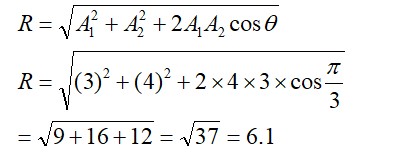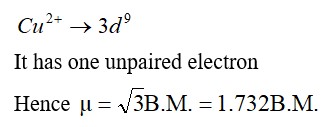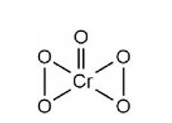8.30 Compare the chemistry of actinoids with that of the lanthanoids with special reference to:
(i) Electronic configuration
(ii) Atomic and ionic sizes
(iii) Oxidation state
(iv) Chemical reactivity.
8.30 Compare the chemistry of actinoids with that of the lanthanoids with special reference to:
(i) Electronic configuration
(ii) Atomic and ionic sizes
(iii) Oxidation state
(iv) Chemical reactivity.
-
1 Answer
-
8.30
Lanthanoids
Actinoids
Electronic Configuration
It is represented by [Xe]4fx5dy6s2, where x varies from 0 to 14 and y= 0 or 1
It is represented by [Rn]5fx6dy7s2, where x varies from 0 to 14 and y= 0
or 1.
Oxidation state
Generally shows +3 oxidation state only in some cases it is +2 or +4 but never greater than +4
It has +3 oxidation state but also shows higher oxidation states such as +4, +5, +6, +7.
Atomic and ionic sizes
Ionic radii of M3+ions decrease in size with increase in atomic number this is called as lanthanoid contraction.
There is a gradual decrease in the size of M3+ ions across the series, this is known as actinoid contraction.
Chemical Reactivity
Lanthanoids are less reactive in nature and form oxides, sulphides, nitrides etc. They have a lesser tendency to form complexes.
They are highly reactive in nature when they are in the finely divided state. They have a higher tendency to form complexes and even react with non-metals at moderate temperature.
Actinoid Contraction > Lanthanoid contraction
Lanthanoids show lanthanoid contraction due to which their size is quite small as compared to actinoids although there is actinoid contraction also lanthanoid contraction has more impact on elements as there is one shell less than actinoids, so lanthanoids have less tendency to lose an electron and to undergo any reaction like the formation of oxide etc.
Similar Questions for you
K2Cr2O7 + H2O2 + H2SO4->
Potassium permanganate in alkaline medium oxidise lodide to lodate.
Compound A is
KMnO4 decomposes upon heating at 513 K and forms K2MnO4 and MnO2.
2KMnO4
Taking an Exam? Selecting a College?
Get authentic answers from experts, students and alumni that you won't find anywhere else
Sign Up on ShikshaOn Shiksha, get access to
- 65k Colleges
- 1.2k Exams
- 679k Reviews
- 1800k Answers




